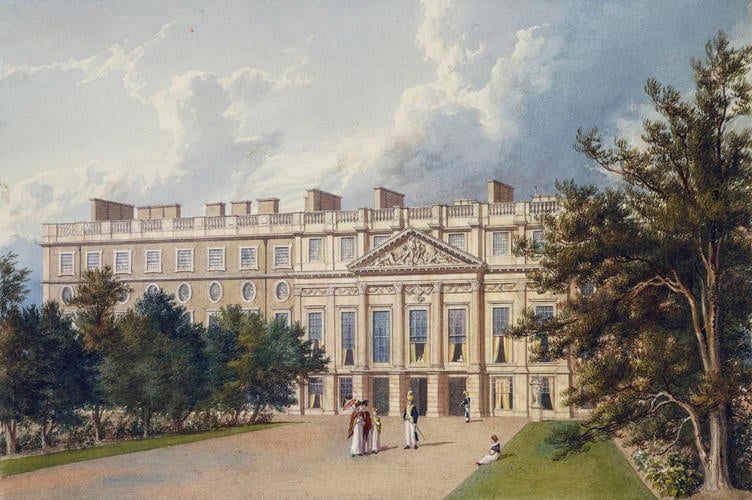William Westall (1781-1850)
Hampton Court Palace: The east (garden) front 1819
Watercolour with touches of bodycolour over pencil | 19.5 x 28.8 cm (sheet of paper) | RCIN 922124
-
Like Kensington Palace, Hampton Court Palace - on the River Thames to the south-west of London - has not been occupied by the sovereign since the reign of George II. George III seldom visited it, preferring the other rural residences at Richmond and Kew - or Windsor.
The earliest buildings at Hampton Court date from the start of the sixteenth century, when Cardinal Wolsey erected for himself a residence of royal proportions and grandeur. It was confiscated by Henry VIII in the 1530s and was further enlarged and enhanced. Soon after the accession of William and Mary in 1689, Christopher Wren was commissioned to create a new royal palace at Hampton Court - set within an up-to-date formal garden. Work on this magnificent project continued into the early eighteenth century and resulted in two separate apartments - for the King, and for the Queen - arranged around a new courtyard (Fountain Court) and looking east and south over splendid gardens. The brick and stone façade shown here, in front of the east-facing rooms of the Queen’s Apartments, was the chief external face of this new work. The three windows beneath the pediment at first-floor level light the Queen’s Drawing Room.
Catalogue entry adapted from George III & Queen Charlotte: Patronage, Collecting and Court Taste, London, 2004Provenance
Probably acquired by George IV
-
Creator(s)
Acquirer(s)
-
Medium and techniques
Watercolour with touches of bodycolour over pencil
Measurements
19.5 x 28.8 cm (sheet of paper)
Other number(s)
RL 22124Alternative title(s)
Hampton Court Exterior.










